- Firefighter recommended
- Steel casing
- Easy to service
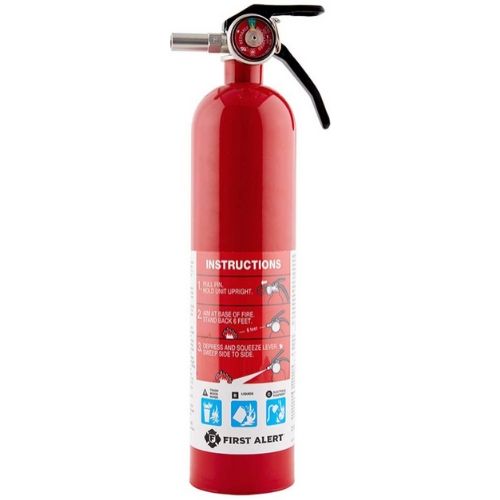 First Alert Standard Home Fire Extinguisher
First Alert Standard Home Fire Extinguisher
- Under $30
- Mounting bracket included
- 10-year warranty
- Under $30
- Mounting bracket included
- 10-year warranty
- Compact
- Easy to use
- Non-toxic
Amerex Is a Firefighter’s Pick
When we started researching the best fire extinguishers, we knew we should start by asking a pro, so we talked to Henrico County firefighter Sarah Hill. Right away she recommended the Amerex brand. When asked why it was her top pick, she said, “Reliable. It’s what we use.”
The more we looked into Amerex, the more evidence we found to support her claim. It’s one of the most recommended fire extinguishers on the market, and its steel casing and aluminum valves make it durable enough to withstand a fire and be recharged for future use.
The Amerex B402 is a dry chemical fire extinguisher certified for class A, B, and C fires, and it discharges for 14 seconds. One Amazon reviewer said that a home Amerex extinguisher that was last inspected in 1998 successfully put out a fire in his house in 2019.1 While we don’t recommend letting your fire extinguishers go without maintenance for that long, it’s definitely proof that Amerex extinguishers are reliable.
Top Fire Extinguishers of 2020
- Amerex B402: Best for Reliability | Read Review
- First Alert Standard Home Fire Extinguisher: Best for Budget | Read Review
- The Fireman Fire Extinguishing Spray: Best for Convenience | Read Review
- First Alert Tundra Spray: Portable Pick | Read Review
- Kidde ABC Multipurpose Fire Extinguisher: Disposable Pick | Read Review
| List Price * |
| Fire Class Rating |
| Casing Construction |
| Valve construction |
| Fire Suppressant Type |
| Price |
|
Best for Reliability
|
Best for Budget
|
Best for Convenience
|
Portable Pick
|
Disposable Pick
|
| Amerex B402 | First Alert Standard Home Fire Extinguisher | The Fireman Fire Extinguishing Spray | First Alert Tundra Spray | Kidde ABC Multipurpose Fire Extinguisher |
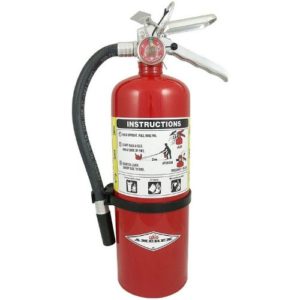 |
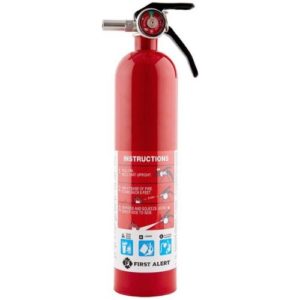 |
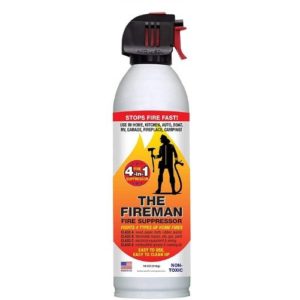 |
 |
 |
| $54.49 | $16.97 | $34.99 | $21.90 | $36.25 |
| A,B,C | A,B,C | A,B,C,K | A,B,C,K | A,B,C |
| Steel | Aluminum | Unknown metal | Unknown metal | Aluminum |
| Metal | Metal | Plastic | Plastic | Metal |
| Dry chemical | Dry chemical | Wetting agent | Dry chemical | Dry chemical |
| View on Amazon | View on Amazon | View on Amazon | View on Amazon | View on Amazon |
Amazon.com prices as of 12/17/19 11:36 a.m. MST. See full disclaimer.
Reviews: Best Fire Extinguishers
Amerex B402: Best for Reliability
If you want a heavy-duty, definitely-going-to-do-the-job fire extinguisher, then Amerex extinguishers are your best bet. The firefighter we talked to gave them top marks for reliability and effectiveness.
We chose the B402 for our recommendation because it’s a more manageable five-pound size, and the extinguisher’s solid steel casing brings its weight up to nearly 10 pounds. It releases a forceful dry chemical cloud to swallow fires fast, but testers say that the cloud is also enough to swallow the person spraying it, driving them from the room.2 The spray also leaves a substantial mess behind.
Amerex extinguishers are fully rechargeable, which is nice, since they’re the priciest fire extinguishers on our list. But we recommend double-checking the tamper seal and the pressure gauge if you buy your Amerex on Amazon, as Amazon customers report receiving recharged extinguishers with broken seals or without a full charge.
Pros
- Firefighter recommended
- Reliable
- Rechargeable
- Effective
- Sturdy
Cons
- Messy
- Potentially uncharged to start with
First Alert Standard Home Fire Extinguisher: Best for Budget
A tight budget should never prevent you from keeping your family safe, which is why we wanted to include the affordable First Alert Standard Home Fire Extinguisher. It costs only around $25, so you can purchase one—or more than one—without breaking the bank.
Despite its low price, the First Alert Standard Home Fire Extinguisher is still rated to handle most home fires, including fabric, wood, paper, flammable liquids, and electrical fires. It’s rechargeable, but the cost of recharging is high enough and the cost of this extinguisher is low enough that it probably makes sense to just buy a new one after you use it.
With its aluminum casing, it’s not as sturdy as the Amerex, but it’s lighter. It’s a good choice if you have kids or older adults in your home who might not be able to lift a heavier extinguisher.
Pros
- Mounting bracket included
- Lightweight materials
- Low price tag
- 10-year warranty
Cons
- Low-grade materials
The Fireman Fire Extinguishing Spray: Best for Convenience
As a Community Emergency Response Team (CERT) member, I had to take a training class on properly using a fire extinguisher. Unfortunately, most people don’t get that kind of training, which is why we included the Fireman Fire Extinguishing Spray on our list.
The Fireman is a portable aerosol can with a trigger nozzle, making it super easy to operate. (If you’re still unsure, it also has clear instructions on the back.) It sprays a non-toxic wetting agent that’s A, B, C, and K certified, and cleaning up the residue requires only soap and water.
Bonus: the can is only about 10 inches tall, so you can store it in a kitchen cabinet. But be careful storing it near food, as some customer reviews say the cans can spring a leak.3 For this reason, we recommend buying the two-pack, just in case one loses pressure.
Pros
- Easy to use
- Compact
- Not messy
- Grease-fire certified
Cons
- 3-year shelf life
- Potentially leaky
More Fire Extinguishers That Are Worth a Look
We found a few more fire extinguishers that didn’t quite make the top three, but had enough good qualities that we think they’re worth considering as you shop around.
First Alert Tundra Fire Extinguishing Spray: Portable Pick
Like The Fireman, the First Alert Tundra Spray comes in a compact, portable aerosol can, but it got bumped down lower on our list because it doesn’t have the easy-to-use trigger nozzle. You have to press down pretty hard to get it to spray, but when it does, it covers a wider area than the Fireman.5
It’s also nontoxic, and it leaves a dry residue that you can wipe up easily. Like the Fireman, it’s rated for class A, B, C, and K fires, so it’s great to keep in the kitchen.
Kidde ABC Multipurpose Home Fire Extinguisher: Disposable Pick
While we found the Kidde ABC Multipurpose Home Fire Extinguisher among the easiest to use, our firefighting friend said it’s not always reliable.
It’s made of aluminum, like the First Alert Standard Home Fire Extinguisher, so it’s lightweight and portable, but unlike the First Alert, it’s considered disposable—no recharging. Still, at around $20, the Kidde Fire Extinguisher is one of the least expensive fire extinguishers on our list, so you can stock up.
Things to Consider Before You Buy
Types of Fires and Extinguisher Ratings
Before you purchase a fire extinguisher, it’s important to understand the different types of fires. Chemical fire extinguishers are filled with different fire suppressants, and choosing a type of extinguisher with the wrong contents could actually make a fire worse (like throwing water on a grease fire).
Household fires fall under three classifications, depending on the type of fuel burning. The most common fire extinguisher classifications are A, B, C, and K.
- Class A: Solid combustible materials that are not metals, like wood, paper, cloth, plastics, and rubber.
- Class B: Flammable liquids, like gasoline, oil, grease, and paints.
- Class C: Electrical equipment, like appliances and outlets.
- Class K: Cooking oils and greases, animal fats, and vegetable fats.
ABC fire extinguishers will handle most household fires, but just to be on the safe side, it’s smart to also have a K-rated fire extinguisher on hand for your kitchen.
Extinguisher Placement
Once you’ve selected the best fire extinguishers for your home, placement is important. You might want to store your extinguisher right next to your stove, but fire extinguishers shouldn’t be subjected to high temperatures. Also, if your stovetop bursts into flames, you won’t want to be near it.
Instead, place fire extinguishers in locations no closer than 5–8 feet from potential fire sources like deep fat fryers, fireplaces, or clothes dryers. This way you can access them quickly and safely in case of a fire. Make sure that there is always a fire extinguisher no farther than 40 feet away from any location in your home.
How to Use a Fire Extinguisher
After your fire extinguishers are in place, don’t just set them and forget them. Make sure everyone in your household knows where they are and how to use them.
Take the time to read their labels, and rehearse the steps you would need to take to operate them in an emergency.
Remember P.A.S.S.:
Pull the pin,
Aim the extinguisher at the base of the fire,
Squeeze the trigger
And Sweep the spray across the base of the fire.
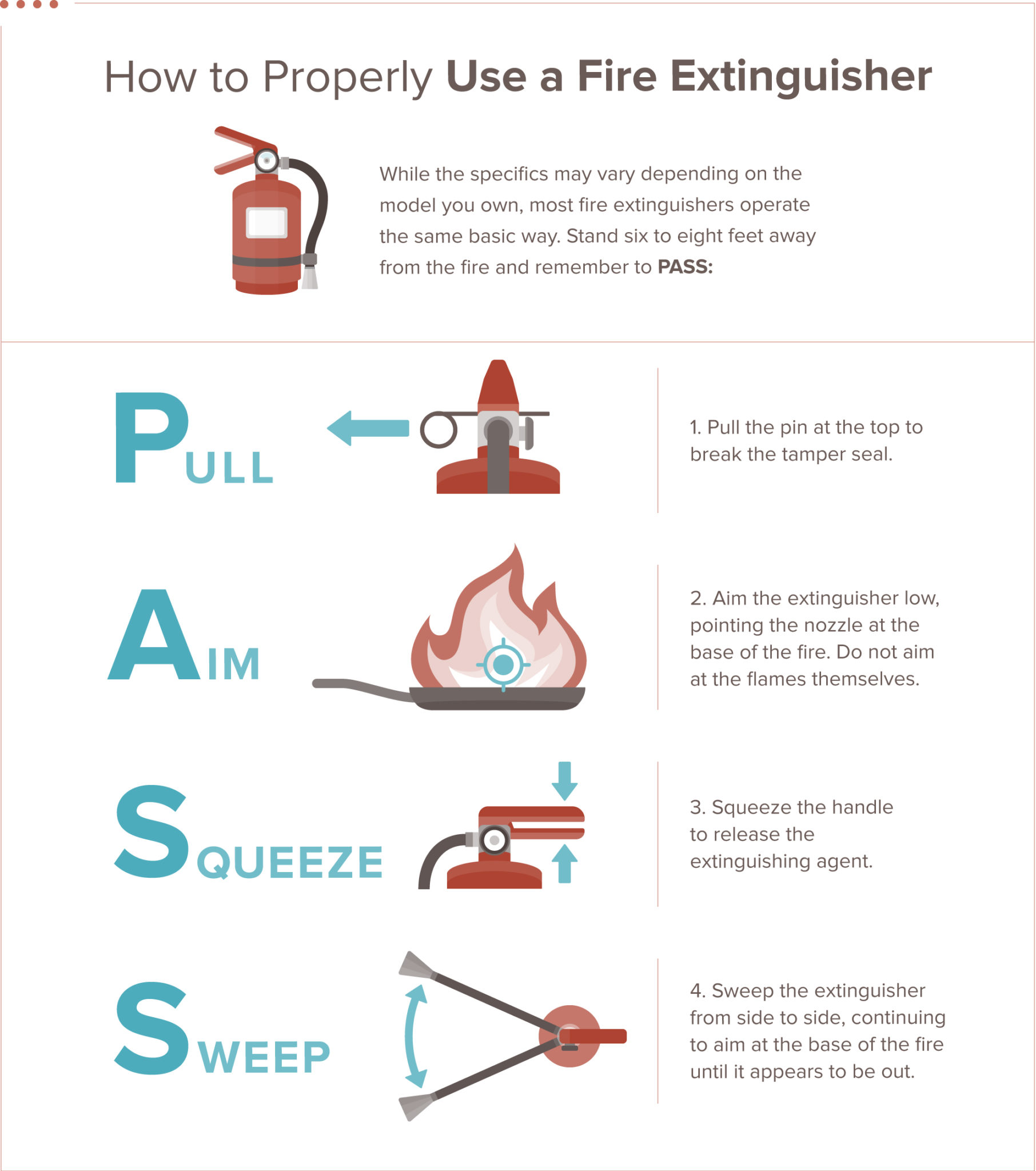
Maintenance
The National Fire Protection Association (NFPA) recommends installing a fire extinguisher on every floor of your home and having it inspected annually. The US Department of Agriculture (USDA) takes that counsel even further, recommending that you install separate fire extinguishers in your kitchen, garage, basement, and car. Put them in plain view, within easy reach of adults—though out of reach of children—and near an escape route.
Follow these guidelines for regular maintenance on your fire extinguishers:
- Check the pressure regularly. The pressure gauge needle should be in the green zone. Replace or recharge any extinguishers if the needle is in the red zone.
- Monitor for damage. Make sure the pin and tamper seal are intact. Check for dents, leaks, rust, or other signs of wear.
- Shake it. If you have a dry chemical extinguisher, many manufacturers recommend shaking it monthly so the powder does not settle.
- Get it tested. Get your extinguisher pressure-tested every few years by a professional, as per the manufacturer’s recommendation.
- Recharge. No matter how much (or how little) was used, if you discharged an extinguisher, it needs to be recharged. Your local fire department may offer this service, or you can find a professional recharging company in your area.
- Discard. All disposable extinguishers must be discarded after use.
IMPORTANT
Fire Extinguisher FAQs
Fire extinguishers seem complicated. Shouldn’t I just let the fire department handle a fire?
Remember, with flammable materials, fires can double in size every 30 seconds. A fire the size of a trash can becomes the size of a coffee table in a minute, the size of a sofa in 90 seconds, and flames as big as a full-size bed in two minutes. You and your fire extinguisher are your first line of defense. It may take firefighters five to 10 minutes or more to reach you, which is more than enough time to lose your home or a life.
How does a water mist extinguisher work?
Water mist extinguishers are best for class A fires (flammable materials like wood, fabric, and combustible plastic) especially when there’s a danger of electrical shock.
Unlike chemical fire extinguishers, water mist extinguishers use a clean agent with no residue so cleanup is easier, but they’re less effective on class B and C fires, and may even make them worse.
What’s most effective on class B and C fires?
Carbon dioxide extinguishers work best for class B and C fires (flammable liquids and electrical equipment) because they smother the fire and cool it very quickly with a cold discharge.
What else can I do to protect my family against fire and flood?
Security systems are a smart way to protect your home and family against fire, flood, carbon monoxide poisoning, and of course, intruders.
Professional safety monitoring gives you an extra set of eyes on your home to help you handle emergencies. Incorporating smart products into your security system can help your devices work together, like having your thermostat turn off your home’s air circulation system when smoke is detected.
How We Picked the Best Fire Extinguishers
To research the best fire extinguishers, we talked to a firefighter to learn from her experience which extinguishers were the most effective at putting out fires and which were most reliable long-term. We also watched videos of different fire extinguishers in action, read more than 100 reviews from customers about their successes and failures using each extinguisher, and visited manufacturer websites for more information. Our full methodology explains more about our methods for reviewing consumer products.
Sources:
- Amazon, “Amerex B402 Customer Reviews”
- Amazon, “The Fireman Customer Reviews“
- YouTube: MyCupOfJoe, “Tundra Fire Extinguisher Review“
*Amazon.com list price as of 12/17/19 11:37 a.m. MST. Product prices and availability are accurate as of the date/time indicated and are subject to change. Any price and availability information displayed on Amazon at the time of purchase will apply to the purchase of this product. Safewise.com utilizes paid Amazon links.
Certain content that appears on this site comes from Amazon. This content is provided “as is” and is subject to change or removal at any time.
The post Best Fire Extinguishers appeared first on SafeWise.

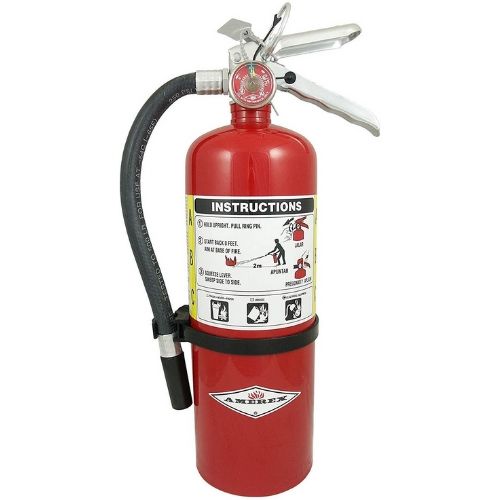
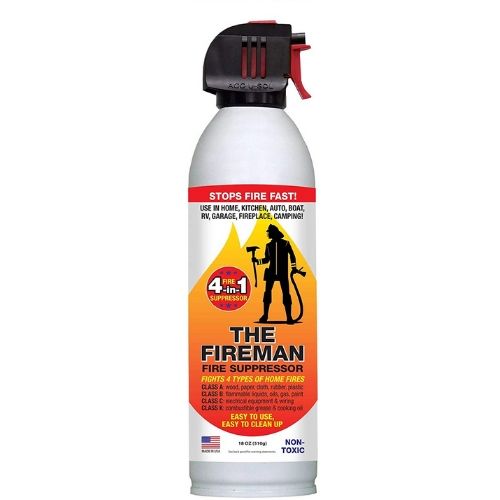
No comments:
Post a Comment